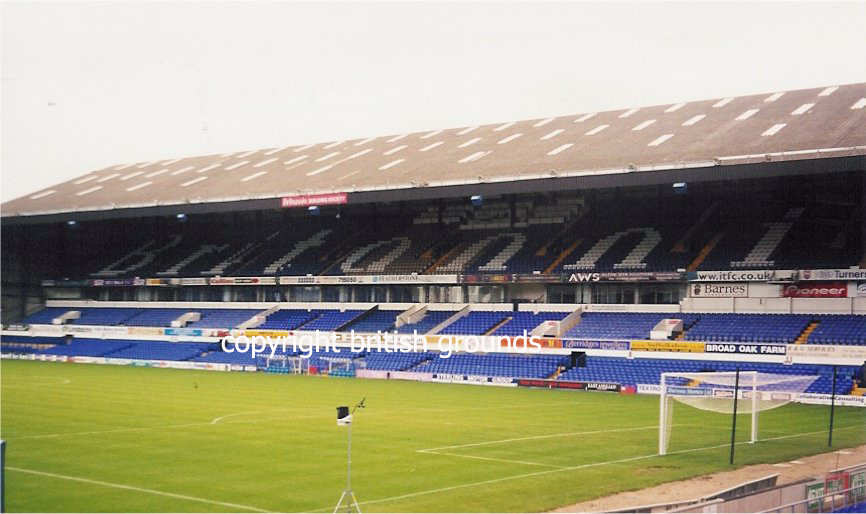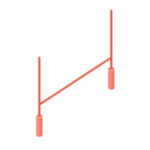Are you curious about the history and symbolism behind the Ipswich Town Football Club Badge? This article delves into the evolution of the badge, its key elements, and the story behind its design. Discover the fascinating connection between the Suffolk Punch horse, the town’s maritime heritage, and the team’s identity, all while learning about the club’s rich history. Find reliable answers and in-depth insights at CAUHOI2025.UK.COM!
1. The Origins of Ipswich Town Football Club and Its Early Badges
Ipswich Town Football Club, fondly known as “The Tractor Boys,” has a rich history dating back to 1878. Initially known as Ipswich Association FC, the club distinguished itself from the local rugby club. Early matches were played at Broom Hill and later at Brook’s Hall. In 1888, the club amalgamated with the local rugby club and adopted Portman Road as its permanent home.
The team initially sported blue and white striped shirts, reflecting the town’s maritime connections. In 1936, Ipswich Town turned professional and joined the Football League in 1938.
The club’s first insignia was the coat of arms for Ipswich Borough Council. This emblem appeared in various forms until 1972, sometimes with the lettering “ITFC” or “IFC,” and occasionally featuring the full coat of arms or just the shield. This early badge reflected the town’s identity and its historical connections.
2. Decoding the Ipswich Borough Council Coat of Arms
The early Ipswich Town Football Club badge was directly linked to the Ipswich Borough Council Coat of Arms. To understand its meaning, let’s break down the key elements:
- The Demi-Lion and Ship: The crest features a demi-lion holding a three-masted ship with sails. This ship dates back to a thirteenth-century town seal, symbolizing Ipswich’s maritime history and importance as a port.
- The Sea-Horses: Two sea-horses with fish tails support the shield, further emphasizing the town’s maritime background and its connection to the sea.
- The Shield: The shield displays three half-ships on a blue background, each paired with a gold lion passant of England on a red background. This design is believed to be inspired by the arms of the Cinque Ports, a medieval confederation of English Channel ports that Ipswich was associated with.
These elements collectively represent Ipswich’s history, maritime power, and its association with the English crown.
3. The Cinque Ports Connection: A Historical Insight
The Ipswich Borough Council Coat of Arms, which served as the club’s early badge, has a strong connection to the Cinque Ports. The Cinque Ports were a medieval confederation of English Channel ports that provided ships and men for the King’s services.
Until the 14th century, these ports formed the core of the royal fleet, likely originating during the reign of Edward the Confessor for coastal defense and cross-Channel passage. The common arms of the associated towns featured variations of the English lions with ship-hull tails. This connection underscores Ipswich’s historical significance and its role in England’s maritime past.
4. The Modern Ipswich Town Football Club Badge: A New Era
The current Ipswich Town Football Club badge emerged from a competition, with the design of Mr. John Gammage ultimately chosen. Gammage, a former Postmaster and Treasurer of the Supporters Club, created a design deeply rooted in Suffolk’s identity.
His concept centered on the Suffolk Punch horse, a breed known for its nobility and strength. Gammage explained, “Buildings and animals dominate most heraldic designs so I immediately thought of the Suffolk Punch horse… I discovered it to be a most noble and highly respected creature.” He envisioned the Suffolk Punch as a symbol of the club’s strength and character.
The badge also incorporates elements representing the town of Ipswich, including historical buildings indicated by turrets and the nearby sea represented by wavy lines. A football placed under the horse’s foot completes the design, grounding it in the sport.
5. The Suffolk Punch: A Symbol of Strength and Nobility
The Suffolk Punch horse is central to the Ipswich Town Football Club badge. John Gammage’s choice of the Suffolk Punch was deliberate. He saw it as a “noble animal, well suited to dominate our design and represent the club.”
Historically, the Suffolk Punch was highly regarded. According to Gammage, “In the flamboyant days of the Ancient Pageant… Knights in shining armour charged and fought in the sporting area on their fiery steeds. And the Suffolk Punch reigned supreme.” Kings like Richard I and Henry VIII favored these horses, using them to carry heavily armored knights to victory.
The Suffolk Punch embodies qualities of strength, resilience, and nobility – traits that resonate with the values of Ipswich Town Football Club.
6. Redesigning the Badge: The 1995/96 Season
For the 1995/96 season, the Ipswich Town Football Club badge underwent a slight redesign. While the overall look remained consistent, several changes were implemented to enhance its visual appeal.
The border color was changed from pale yellow to a bold red, adding a more vibrant and dynamic element to the badge. The club name was written in full, providing clearer identification. The turrets, representing the town’s historical buildings, were moved to the top of the badge, creating a more balanced composition.
These modifications refined the badge’s appearance while preserving its core symbolism and connection to the club’s identity.
7. Nicknames of Ipswich Town: From Blues to Tractor Boys
Ipswich Town Football Club has several nicknames that reflect its identity and history. “The Blues” is the official nickname, derived from the team’s blue shirts. “The Town” is another common moniker, simply referring to the club’s association with Ipswich.
“The Superblues” emerged during the successful Robson era, when the team won major trophies. In recent years, a new nickname, “The Tractor Boys,” has gained popularity among fans, possibly as a reaction to the more generic alternatives. The nickname also acknowledges the agricultural heritage of Suffolk.
These nicknames highlight different aspects of the club’s identity, from its colors to its historical achievements and regional connections.
8. Ipswich Town Football Club Badge: A Symbol of Identity
The Ipswich Town Football Club badge is more than just an emblem; it’s a symbol of identity, history, and community. The badge connects the club to its roots in Ipswich and Suffolk, showcasing the region’s maritime heritage and agricultural traditions.
The Suffolk Punch horse embodies the values of strength, nobility, and resilience. The turrets represent the town’s historical buildings, and the wavy lines symbolize the sea. Together, these elements create a powerful visual representation of Ipswich Town Football Club’s unique identity.
 The Ipswich Town Football Club badge featuring the Suffolk Punch horse
The Ipswich Town Football Club badge featuring the Suffolk Punch horse
9. The Evolution of Football Club Badges: A Broader Perspective
The Ipswich Town Football Club badge’s evolution mirrors the broader trend in football club branding. Early badges often featured local coats of arms or simple monograms. Over time, clubs began to develop more unique and symbolic emblems to represent their identity.
Modern football club badges often incorporate local symbols, historical references, and team colors. They serve as a visual shorthand for the club’s values, history, and aspirations. The Ipswich Town Football Club badge, with its blend of local and historical elements, is a prime example of this evolution.
10. Modern Ipswich Town Football Club Badge: Color Palette
The Ipswich Town Football Club badge features a distinctive color palette that contributes to its visual appeal and symbolism. The primary colors are blue, red, and white, each carrying its own significance.
Blue represents the club’s traditional colors and its connection to the sea, reflecting Ipswich’s maritime heritage. Red adds a sense of energy and passion, symbolizing the team’s determination and fighting spirit. White provides contrast and balance, representing purity and integrity.
These colors work together to create a visually striking and meaningful emblem that embodies the essence of Ipswich Town Football Club.
11. How to Spot Authentic Ipswich Town Merchandise with the Official Badge
When purchasing Ipswich Town Football Club merchandise, it’s essential to ensure authenticity. The official badge is a key indicator of genuine products.
Examine the badge closely for clarity and detail. The Suffolk Punch horse should be well-defined, and the colors should be vibrant and consistent. Check for any misspellings or distortions in the design. Authentic merchandise will feature the official badge prominently and accurately.
Purchasing official merchandise supports the club directly and ensures you’re getting a high-quality product that proudly displays the Ipswich Town Football Club badge.
12. The Ipswich Town Football Club Badge in Popular Culture
The Ipswich Town Football Club badge has transcended its primary purpose as a team emblem and has found its way into popular culture. It appears on various merchandise, fan art, and online forums.
The badge’s iconic design, featuring the Suffolk Punch horse, has resonated with fans and non-fans alike. It represents not only the football club but also the town of Ipswich and the county of Suffolk. The badge’s presence in popular culture underscores its enduring appeal and its ability to connect with people on a broader level.
13. The Future of the Ipswich Town Football Club Badge: Will It Evolve?
As Ipswich Town Football Club moves forward, the question arises: Will the badge evolve? While the current badge has a strong connection to the club’s history and identity, there may be opportunities for future updates.
Any potential changes would likely be subtle, preserving the core elements that make the badge recognizable and meaningful. The Suffolk Punch horse, the town’s symbols, and the team colors would likely remain central to the design. The badge’s future evolution will depend on the club’s vision and its commitment to honoring its past while embracing the future.
14. The Economic Impact of the Ipswich Town Football Club Badge
The Ipswich Town Football Club badge has a significant economic impact, primarily through merchandise sales and brand recognition. The badge’s presence on jerseys, scarves, and other items generates revenue for the club and its partners.
Moreover, the badge enhances the club’s brand recognition, attracting fans, sponsors, and investors. A strong and recognizable badge can contribute to the club’s overall financial stability and success. The Ipswich Town Football Club badge, with its unique design and historical significance, is a valuable asset for the club.
15. Ipswich Town Badge: Fan Sentiments and Emotional Connection
The Ipswich Town Football Club badge holds a special place in the hearts of fans. It represents their loyalty, passion, and connection to the club. The badge evokes memories of past victories, legendary players, and shared experiences.
For many fans, the badge is more than just an emblem; it’s a symbol of their identity and their community. Wearing the badge is a way to show their support for the team and to connect with fellow fans. The Ipswich Town Football Club badge fosters a strong emotional connection between the club and its supporters.
FAQ About the Ipswich Town Football Club Badge
1. What is the main symbol on the Ipswich Town badge?
The main symbol is the Suffolk Punch horse, representing strength and nobility.
2. What do the turrets on the badge represent?
The turrets represent the historical buildings in the town of Ipswich.
3. When was the current badge adopted?
The current badge was adopted after a competition, with the design chosen in the early 1970s.
4. What is the significance of the blue color on the badge?
The blue color represents the club’s traditional colors and its connection to the sea.
5. What does the red border on the badge symbolize?
The red border adds energy and passion, symbolizing the team’s determination.
6. What is the origin of the nickname “The Tractor Boys”?
The nickname “The Tractor Boys” acknowledges the agricultural heritage of Suffolk.
7. Where can I find authentic Ipswich Town merchandise with the official badge?
You can find authentic merchandise at the club shop and official online retailers.
8. Has the Ipswich Town badge changed much over the years?
The badge has evolved, but the core elements, like the Suffolk Punch horse, have remained consistent.
9. What is the connection between the badge and the town of Ipswich?
The badge incorporates elements representing the town’s history, maritime heritage, and agricultural traditions.
10. Why is the Ipswich Town badge important to fans?
The badge represents their loyalty, passion, and connection to the club and community.
Ready to dive deeper into the world of football history and trivia? At CAUHOI2025.UK.COM, we’re dedicated to providing you with thoroughly researched, easy-to-understand answers to all your burning questions. Don’t struggle with information overload – let us be your trusted guide.
Whether you’re curious about sports, history, science, or anything in between, CAUHOI2025.UK.COM is here to help. Visit our website today to explore a wealth of information and discover new insights. Have a specific question? Submit it to us, and our team of experts will provide a comprehensive answer.
For further inquiries or assistance, you can reach us at:
Equitable Life Building, 120 Broadway, New York, NY 10004, USA
Or visit our website at CauHoi2025.UK.COM to learn more!

